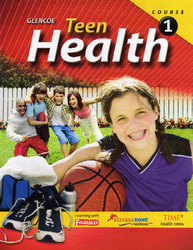
Teen Health Course 1Chapter 4: NutritionStudent Web Activities - Teacher CenterLesson 2 Answers 1. The six colors in the pyramid are orange, green, red, yellow, blue, and purple
2. Examples of whole grain foods include brown rice, bulgur, whole wheat, oatmeal, wild rice, popcorn, barley, whole wheat bread, and whole grain cereals. 3. To avoid getting too much fat choose low or non-fat milk products and lean protein sources such as chicken, fish, and turkey. You can also choose lean cuts of meats, and remove skin and excess fat before cooking meat. 4. The two most important things to remember about exercise are:
Additional Resources for Teachers MyPyramid is a great way to get kids to start thinking about what they eat. Below are some additional sites that may help get the message across.
Lesson 3 Answers 1. As teens hit the growth spurts that occur in adolescence they often feel hungry because their bodies are demanding more food. 2. Eating healthy snacks can:
3. To keep their energy levels high, teens should snack on foods that contain complex carbohydrates and/or protein. 4. It is important to check the labels on food because many manufacturers are using words like “pure” and “all natural” on their products. These words don’t necessarily mean those foods are nutritious. 5. Instead of ignoring the cravings, try to fill them with healthy snacks that are low in sugar, salt, and fat. Additional Resources for Teachers In addition to the recipes for snacks suggested on the Teen Health site above, the sites below offer some other fun alternatives to fast food. Try having students go to the store and compare prices on pre-packaged snacks, versus the price of snacks they can prepare on their own.
|  |















